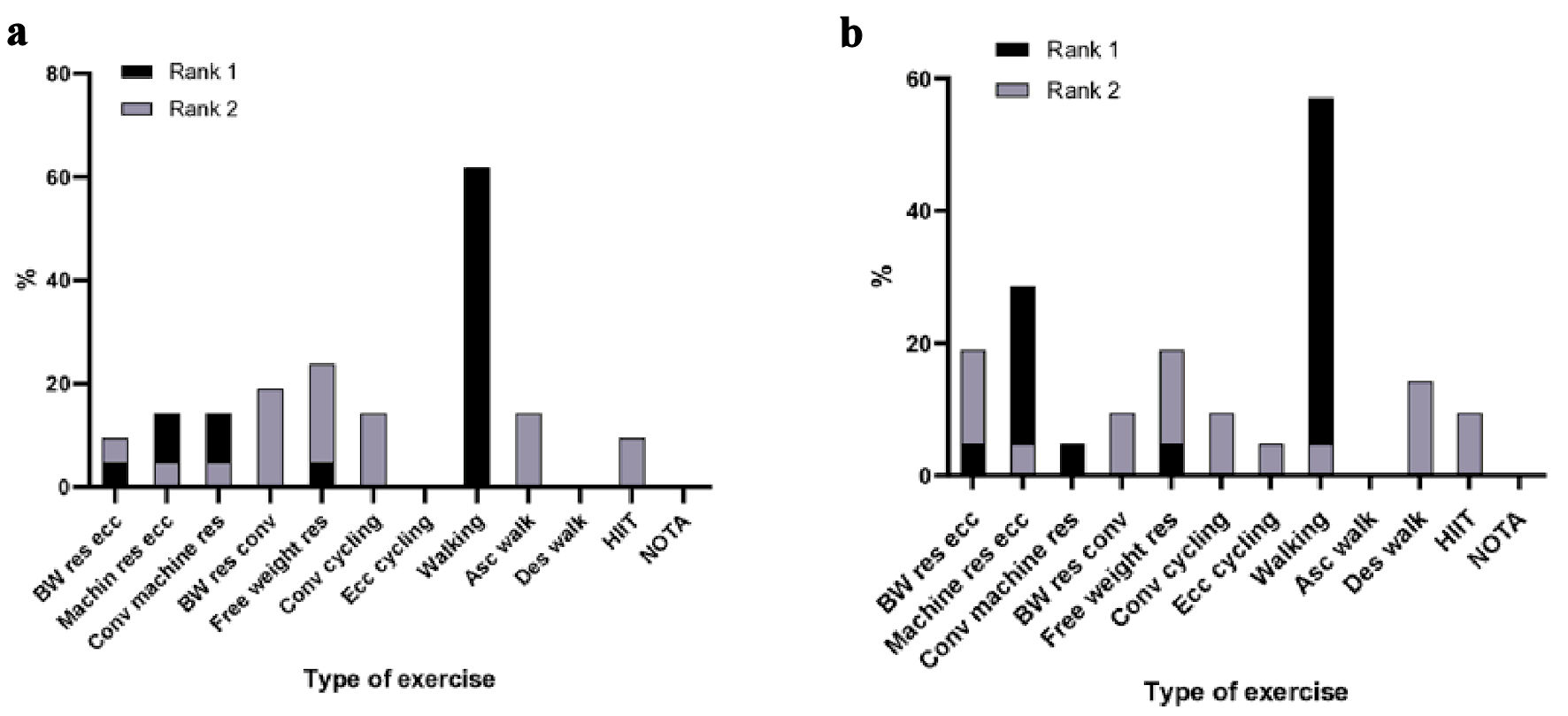
Figure 1. Exercise choices of participants after watching the videos. (a) Ranking of top two exercises in questionnaire 1. (b) Ranking of top exercises in questionnaire 2. Walking was chosen by 57% as rank 1, and eccentric-biased bodyweight resistance and resistance exercise with free weights was chosen by 19% as rank 2. BW res ecc: body-weight resistance eccentric; Machin res ecc: machine resistance eccentric; Conv machine res: conventional machine resistance; BW res conv: body-weight resistance conventional; Free weight res: free weight resistance; Conv cycling: conventional cycling; Ecc cycling: eccentric cycling; Asc walk: ascending stair walking; Des walk: descending stair walking; HIIT: high-intensity interval training; NOTA: none of the above.